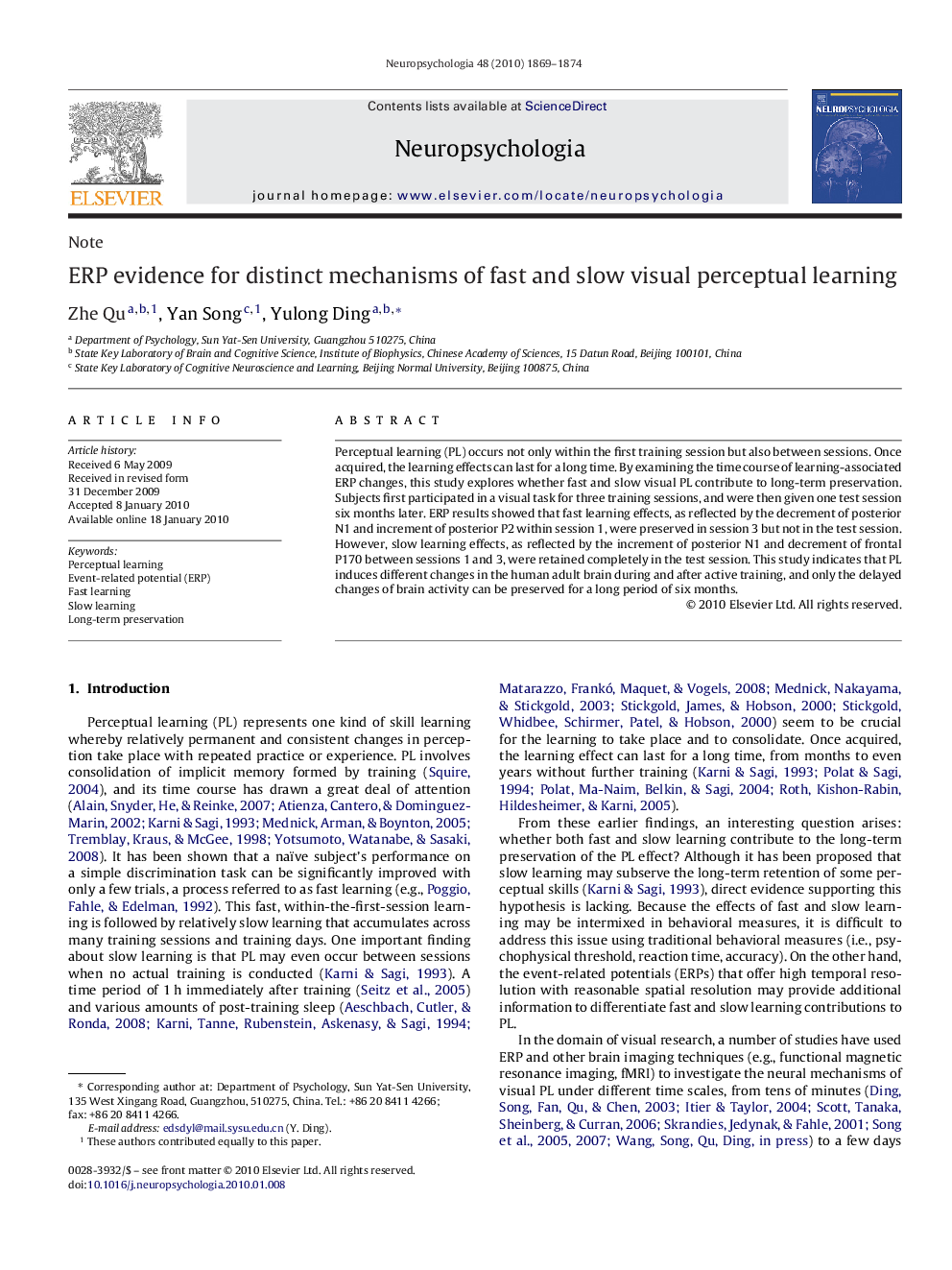| Article ID | Journal | Published Year | Pages | File Type |
|---|---|---|---|---|
| 10466368 | Neuropsychologia | 2010 | 6 Pages |
Abstract
Perceptual learning (PL) occurs not only within the first training session but also between sessions. Once acquired, the learning effects can last for a long time. By examining the time course of learning-associated ERP changes, this study explores whether fast and slow visual PL contribute to long-term preservation. Subjects first participated in a visual task for three training sessions, and were then given one test session six months later. ERP results showed that fast learning effects, as reflected by the decrement of posterior N1 and increment of posterior P2 within session 1, were preserved in session 3 but not in the test session. However, slow learning effects, as reflected by the increment of posterior N1 and decrement of frontal P170 between sessions 1 and 3, were retained completely in the test session. This study indicates that PL induces different changes in the human adult brain during and after active training, and only the delayed changes of brain activity can be preserved for a long period of six months.
Keywords
Related Topics
Life Sciences
Neuroscience
Behavioral Neuroscience
Authors
Zhe Qu, Yan Song, Yulong Ding,
